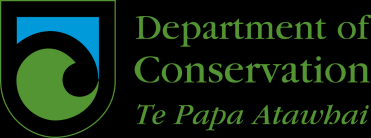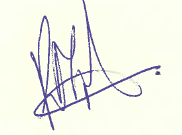
20-E-0410
10 August 2020
Mr Selwyn June
[FYI request #13309 email]
Dear Mr June
Current status of Te Urewera Mainland Island in northern Te Urewera
Thank you for your Official Information request email to the Department of Conservation, dated 14
July 2020.
You noted that, in relation to the ecosystem recovery project in Te Urewera Mainland Island, no
information has been publicly available on the success of the project in recent years, and have asked
the following of the Department:
1. What reports on the project have been received by the Department in recent years?
2. How much financial support per annum does the Department currently provide for the
project?
3. How many departmental staff currently assist with the project?
4. When was the last census of kōkako and kiwi populations taken within the project area, and
what are the results?
Answering each of your questions in turn, I can advise that:
1. Since the passing of Te Urewera Act 2014, in September 2014 the Department has received
no reports on the project.
2. Whereas the Department provides a financial contribution to the implementation of the
overall annual operational plan for Te Urewera (covering biodiversity enhancement and
visitor operations such as the Waikaremoana Great Walk) we do not assign specific amounts
to any particular project. Therefore, we cannot provide you an annual dollar amount of
support provide to the Te Urewera Mainland Island.
3. There are no Departmental staff currently directly assisting with the project, although the
Department has one person working with Ngai Tūhoe on the wider Te Urewera biodiversity
and predator control programme.
4. The most recent kokako surveys of kokako populations that the Department has a record of
are as follows:
• Waikokopu (375ha): May 2014 (8 pairs, 3 singles)
• Mangaone (232ha): June 2012 (46 pairs, 24 singles)
6375402

• Onepu (178 ha): May 2012 (15 pairs, 6 singles)
• Otamatuna (557ha): May 2011 (36 pairs over approx. 1/3 of area, and extrapolated to
assume 118 pairs present within the pest control area)
• Pakoakoa (212 ha): October 2008 (8 pairs, 6 singles)
In the case of kiwis in Te Urewera, DOC conducted a series of ‘call surveys’ of North Island brown
kiwi in the Otamatuna and Mangaone core areas of Te Urewera Mainland Island over the period,
2001 to 2013. The number of calls and call rates recorded from those surveys are shown in the table
below.
Year
Female
Male
Total
Call
calls
calls
calls
rate
(calls
/hour)
2001/02
25
204
229
4.8
2002/03
19
110
129
2.7
2003/04
10
111
121
2.5
2004/05
24
102
126
2.6
2008/09
13
105
118
2.5
2009/10
24
179
203
4.8
2011/12
20
136
156
3.3
2012/13
1
47
48
4.6
The final year in the table (2012/13) was only as partial survey with only about 10 hours listening.
The other years all had 48 hours of kiwi listening.
DOC is not aware of any kokako or kiwi surveys in Te Urewera since July 2014. As mentioned in my
letter in September 2019, the Te Urewera Mainland island area is now part of Te Urewera as defined
in Te Urewera Act 2014 and is under the jurisdiction of Te Urewera Board.
Information on current kokako and kiwi restoration work in Te Urewera is best requested through Te
Urewera Board. The Board sets the overall management plan for Te Urewera (Te kawa O Te
Urewera) as well as the annual priorities for implementation of that plan.
The Tūhoe Trust (Tūhoe-Te Uru Taumatua) leads the actual implementation of Te kawa O Te
Urewera.
Yours sincerely
Rod Treder
Project Manager
+ 64 27 561 1134
[email address]
Department of Conservation Te Papa Atawhai
6375402

